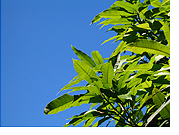|
||||||||||||||
Basic
science of carbon including the carbon cycle Carbon
is unique in its ability to form seemingly unlimited different compounds,
particularly with oxygen and hydrogen e.g. all the hydrocarbons and carbohydrates
but also with nitrogen, phosphorus and sulphur which give rise to proteins,
DNA and most of the molecules associated with life. With a few further additions
e.g. iron for blood, magnesium for chlorophyll and others for vitamins we
can account for most biochemistry. NO other element comes even close to
the number and range of compounds. Carbon
is unique in its ability to form seemingly unlimited different compounds,
particularly with oxygen and hydrogen e.g. all the hydrocarbons and carbohydrates
but also with nitrogen, phosphorus and sulphur which give rise to proteins,
DNA and most of the molecules associated with life. With a few further additions
e.g. iron for blood, magnesium for chlorophyll and others for vitamins we
can account for most biochemistry. NO other element comes even close to
the number and range of compounds.It is crucial since carbon is the key element in all living things therefore that it is “re-cycled” by nature so that life is sustained and this is done via a number of processes (see also separate sections):  Photosynthesis:
the conversion of carbon dioxide in the atmosphere to sugars and starches
in plants under the influence of light from the sun and in the presence
of the green substance in plants called chlorophyll Photosynthesis:
the conversion of carbon dioxide in the atmosphere to sugars and starches
in plants under the influence of light from the sun and in the presence
of the green substance in plants called chlorophyllRespiration: the conversion of oxygen in the atmosphere to carbon dioxide and water when sugars and carbohydrates are used by living things to produce energy. Respiration is similar to combustion from a chemical point of view Combustion or burning: is a chemical reaction between a fuel (e.g. a hydrocarbon or carbohydrate) and an oxidant to produce energy, particularly heat and or light. When the fuel contains carbon, the combustion products include carbon dioxide. Nature’s cycling of carbon through the biosphere and other earth system components through processes like those above leads to the notion of a carbon cycle and of carbon sinks and sources. The flow or “flux” of carbon from a source to a sink may take place relatively quickly e.g. in hours or may take many millions of years especially when crossing between components e.g the biosphere’s biological carbon cycle and the geological carbon cycle. Movement between components; atmosphere, oceans and land is thus very complex. Moreover some systems frequently behave as both sources and sinks for carbon e.g when plants photosynthesise they act as a sink, but when they respire they act as a source. Overall, rainforests and oceans absorb more carbon than they release hence act as a net sink. Thus human impact through land usage change, deforestation or re-forestation is inevitable. The issues arise out of the effect on the overall balance with the complex repercussions in the rest of the cycle. Other process are involved in the carbon cycle e.g. decomposition, volcanic activity, weathering, sedimentation and of course human activity e.g. changing land use. These are referred to in the links and where appropriate separately in The Geography section. |

|
|||||